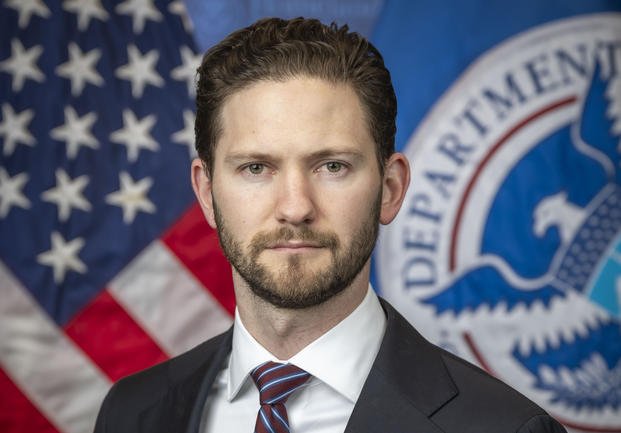
Defense Secretary Pete Hegseth on Sunday ordered a sweeping review of military fitness standards for combat roles -- but before the Pentagon can tighten requirements, he wants clarity on which jobs to raise the bar for.
It's a move that underscores Hegseth's broader push for higher standards in the military, but also one that reflects the long-running debate over gender integration in the ranks.
Before the Pentagon can raise the bar, he argues, the military must first define what, exactly, constitutes a combat role -- a question that has long defied simple answers. On Sunday, he directed the services to effectively inventory what they consider to be conventional ground combat roles, special operations[1] and other unique roles such as divers that may warrant more demanding fitness standards.
Read Next: Bodies of 3 US Soldiers Recovered from Swamp in Lithuania; Search for Last Missing Soldier Ongoing[2]
"I am directing the secretaries of the military departments to develop comprehensive plans to distinguish combat arms occupations from non-combat arms occupations," Hegseth wrote in a memo. "This effort will ensure that our standards are clear, mission-focused, and reflective of the unique physical demands placed on our service members in various roles."
Each of the services has 60 days to submit reports to Hegseth's office, at which point he will decide the next steps.
At the center of Hegseth's push is a familiar talking point: gender-neutral fitness standards for combat arms. That potential shift has served as something of a policy North Star for the defense secretary, who served in the National Guard[3] and as a Fox News host.
"We need to have the same standard, male or female, in our combat roles," Hegseth declared in a video posted to the social media platform X. "Soon, we'll have nothing but the highest and equal standards for men and women in combat."
Officials at the Pentagon told Military.com that the memo's push to increase standards for what Hegseth sees as close combat roles will consider physical fitness, body composition and even grooming standards.
Hegseth had already put all three of those areas under a broader review[4] earlier in March with another memo.
However, officials did not immediately answer questions about whether the move was an effort to push women out of combat roles.
Hegseth has repeatedly disparaged female service members[5] and said that he doesn't believe they should serve in combat. In a podcast weeks before his nomination, he said that he was "straight up just saying we should not have women in combat roles."
Yet, defining combat roles has proven more complicated than it sounds.
In 2022, after more than a decade of debate, the Army[6] formally adopted the Army Combat Fitness Test, or ACFT, which was originally conceived as a job-specific assessment with tailored requirements for different military occupations. However, that plan was abandoned when the service determined that mapping physical standards to occupational specialties was too complex.
One soldier may hold an infantry designation but be assigned to a non-combat role like recruiting[7], while another may work in an administrative role in a front-line unit. Gender-neutral standards, once central to the ACFT, were also scrapped -- much to the chagrin of some senior Army officials.
Hegseth's memo may cause further complications because it applies an Army-focused approach to other services, particularly the Air Force[8], Navy[9] and Space Force[10], which do not have ground combat roles outside of their respective special operations units such as the Navy SEALs[11].
Those units already have their own grueling fitness expectations. Meanwhile, services like the Navy could struggle to articulate combat roles in the same way as the Army.
Setting aside the SEALs, the sea service doesn't have jobs that can uniformly be described as combat or non-combat since even support roles like cooks or logistics specialists are expected to pitch in should their ship come under attack.
Many ships also designate sailors from a variety of jobs to man groups like "small craft attack teams" -- a team that is tasked with temporarily manning .50 caliber machine guns to help defend the ship in the event of an attack from boats smaller than a traditional warship.
That dynamic of everyone on the crew being part of the ship's combat performance was evident when the Navy awarded the rare Combat Action Ribbon[12] -- a prestigious award that signifies a sailor took and returned enemy fire -- after skirmishes with Yemen's Houthi rebels in the Red Sea.
The Navy awarded the ribbon to entire crews, not individuals.
Perhaps the closest thing the Navy has to a classic combat role is its submarine service[13], which is all-volunteer and, until 2010, all male. However, submarine sailors are not only subject to stricter screening and training ahead of receiving a posting on a submarine, they also face a far stricter culture of qualification standards once aboard as well.
Meanwhile, Army planners are also weighing yet another overhaul of fitness standards.
Officials are considering rebranding the ACFT and dropping events such as grading soldiers on how far they can yeet a 10-pound ball[14], according to four officials familiar with the discussions.
Adjustments to baseline combat arms standards are also on the table, following congressional mandates to tighten those requirements by June, though the service was working toward that before the mandate. Behind the scenes, officials have argued that changes to fitness assessments need to be more agile, and shifts to testing cannot be stuck in the mud for a decade.
The ACFT itself has become a paradox by being widely criticized for its low baseline requirements while simultaneously setting near-elite benchmarks for top scores, which can significantly impact promotions and career progression. One glaring example: One event on the test demands male soldiers complete a minimum of just 10 hand-release push-ups, a standard many view as laughably insufficient.
"Quite frankly, as a 50-year-old woman, I'm insulted that they think I need [12] minutes to run a mile," Command Sgt. Maj. JoAnn Naumann, the top enlisted leader for Army Special Operations Command, said on the Mops and Moes podcast [15]in March. Meanwhile, to achieve a top score, younger male soldiers must deadlift 340 pounds and run two miles in 13 minutes and 22 seconds.
Related: Ranger School Is Getting a New Fitness Assessment[16]
© Copyright 2025 Military.com. All rights reserved. This article may not be republished, rebroadcast, rewritten or otherwise distributed without written permission. To reprint or license this article or any content from Military.com, please submit your request here[17].

